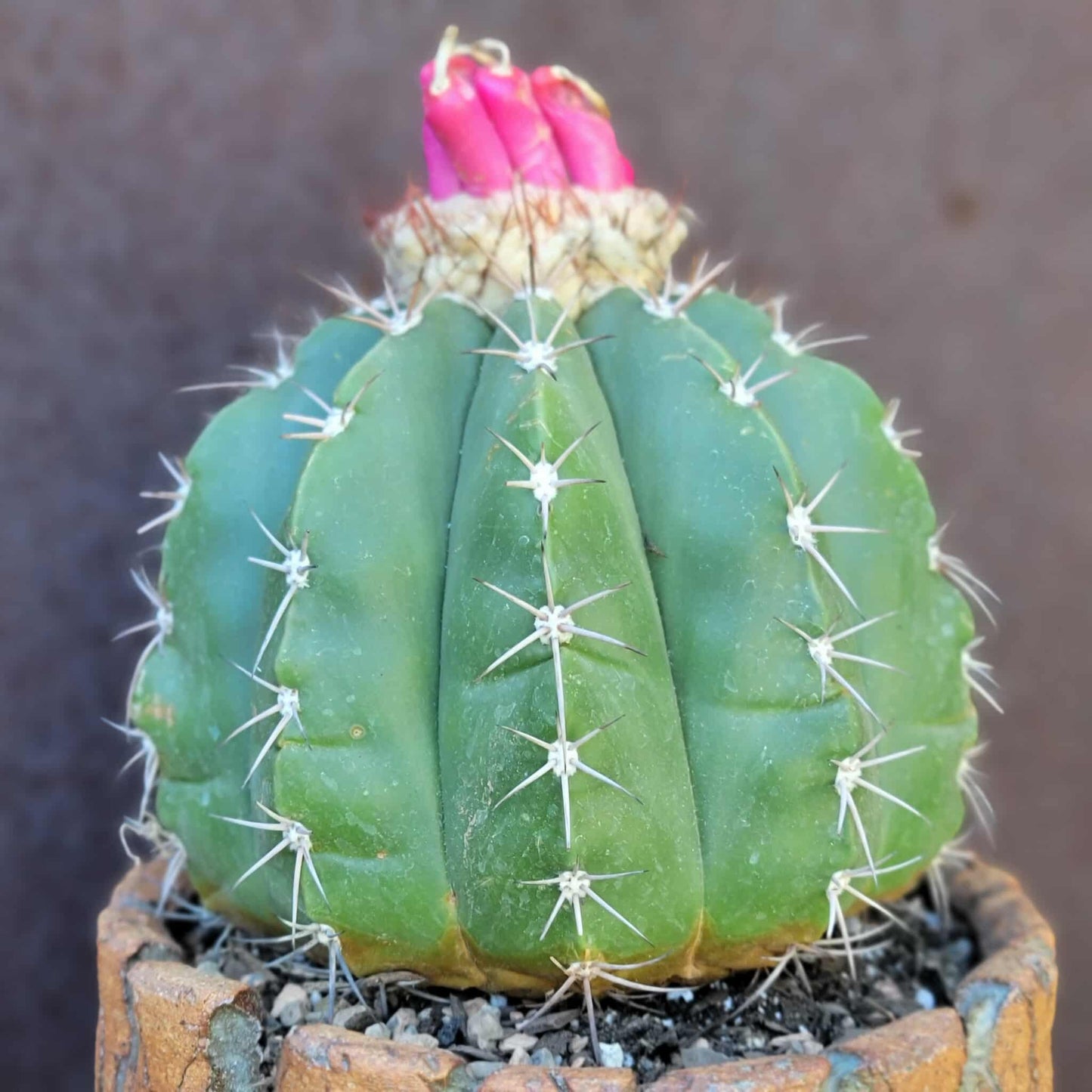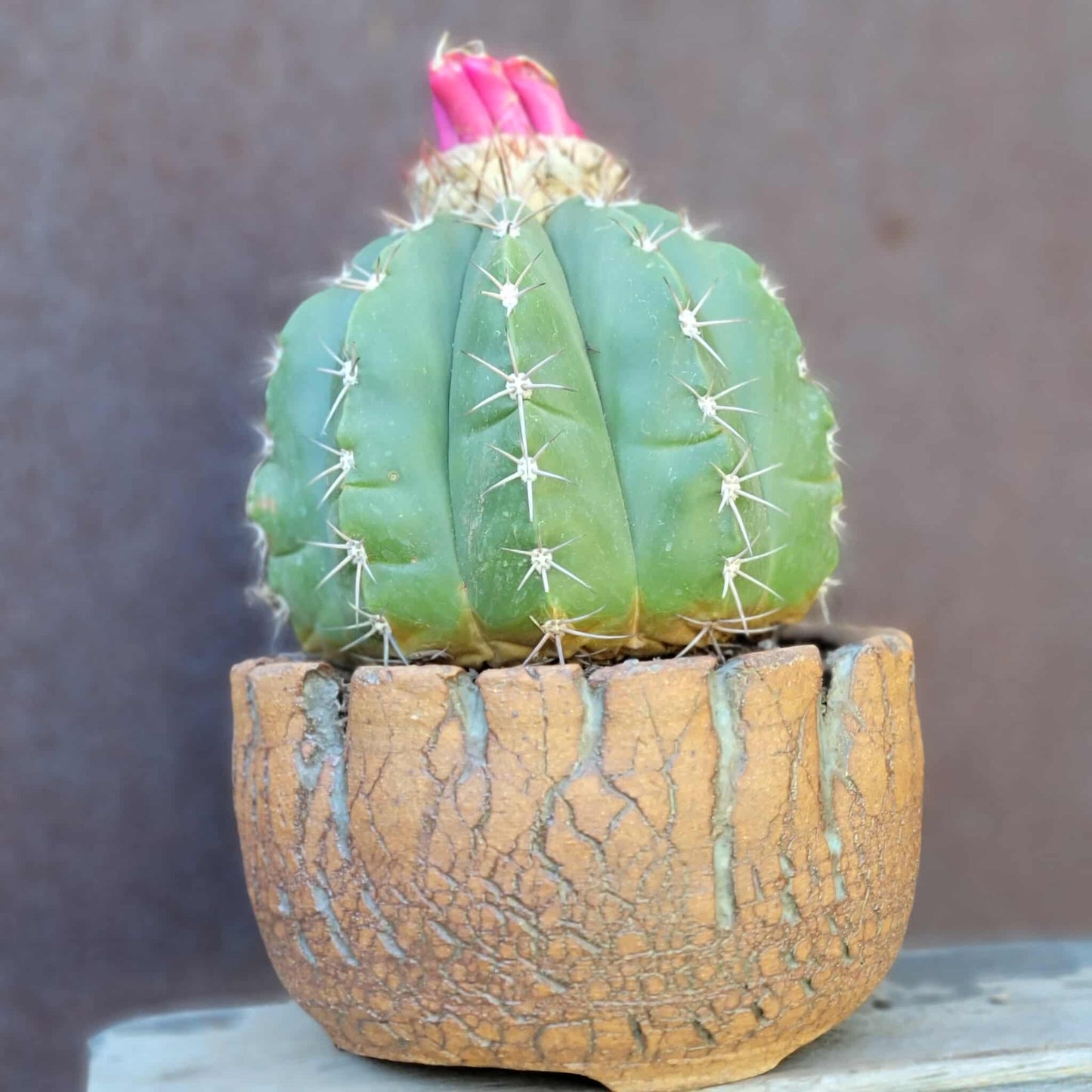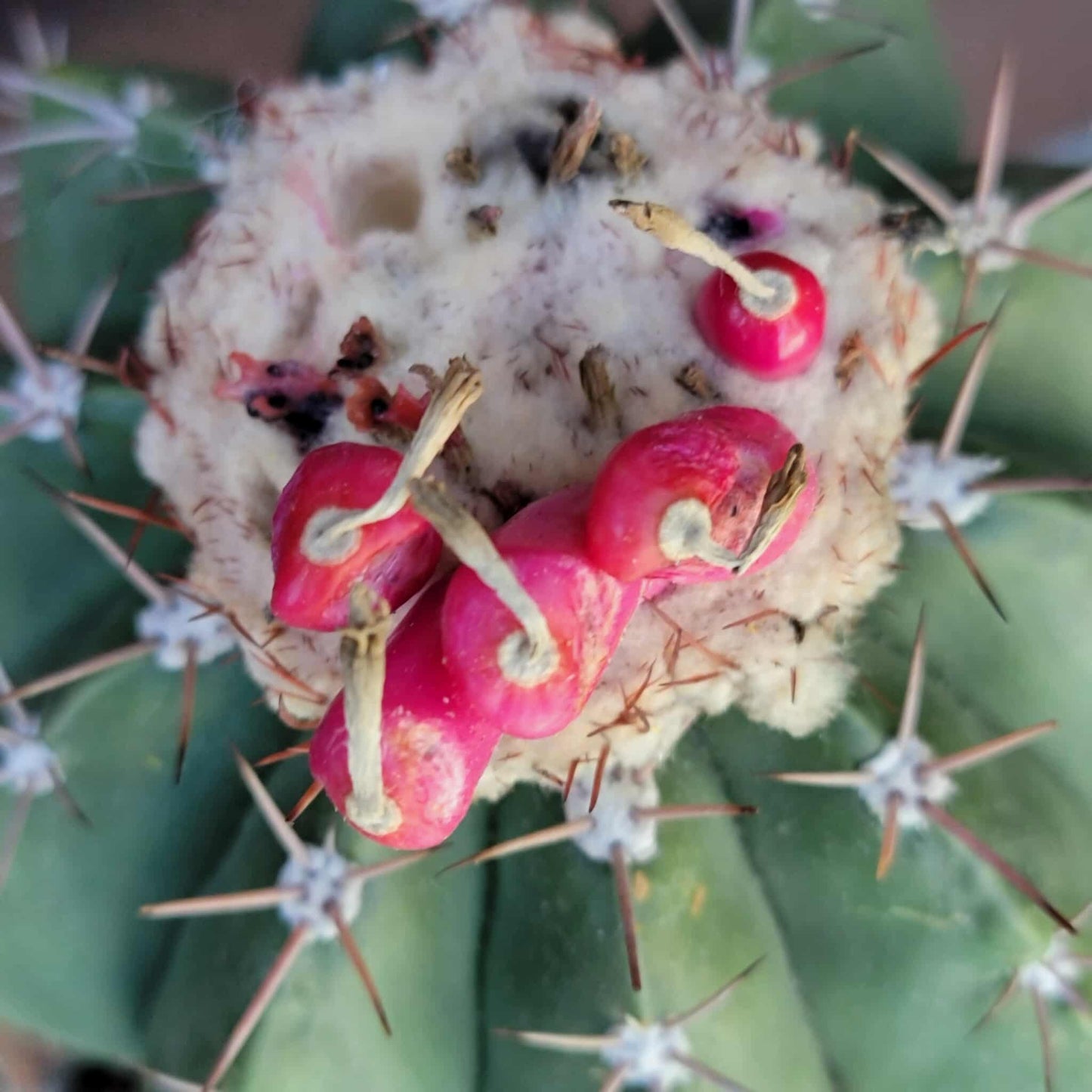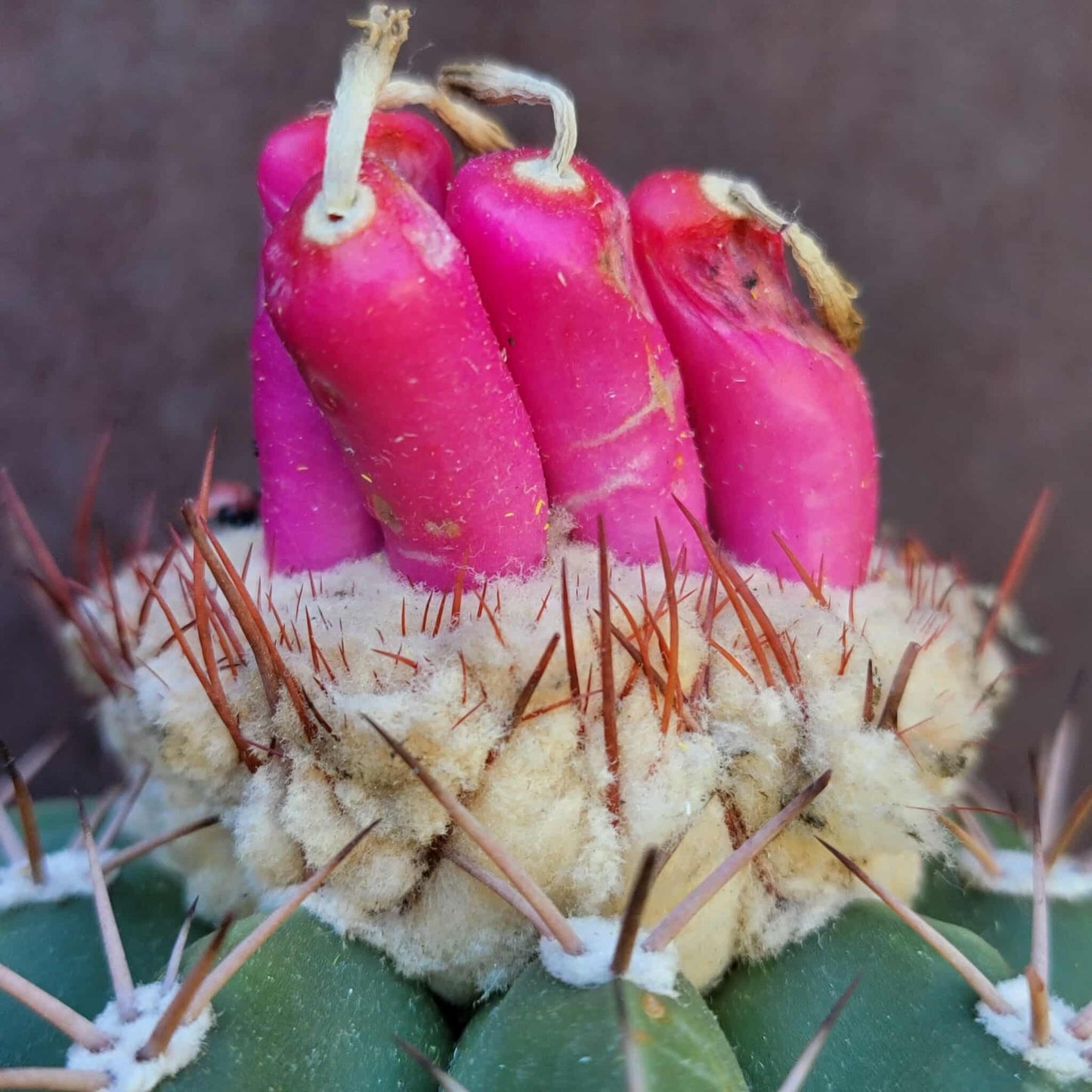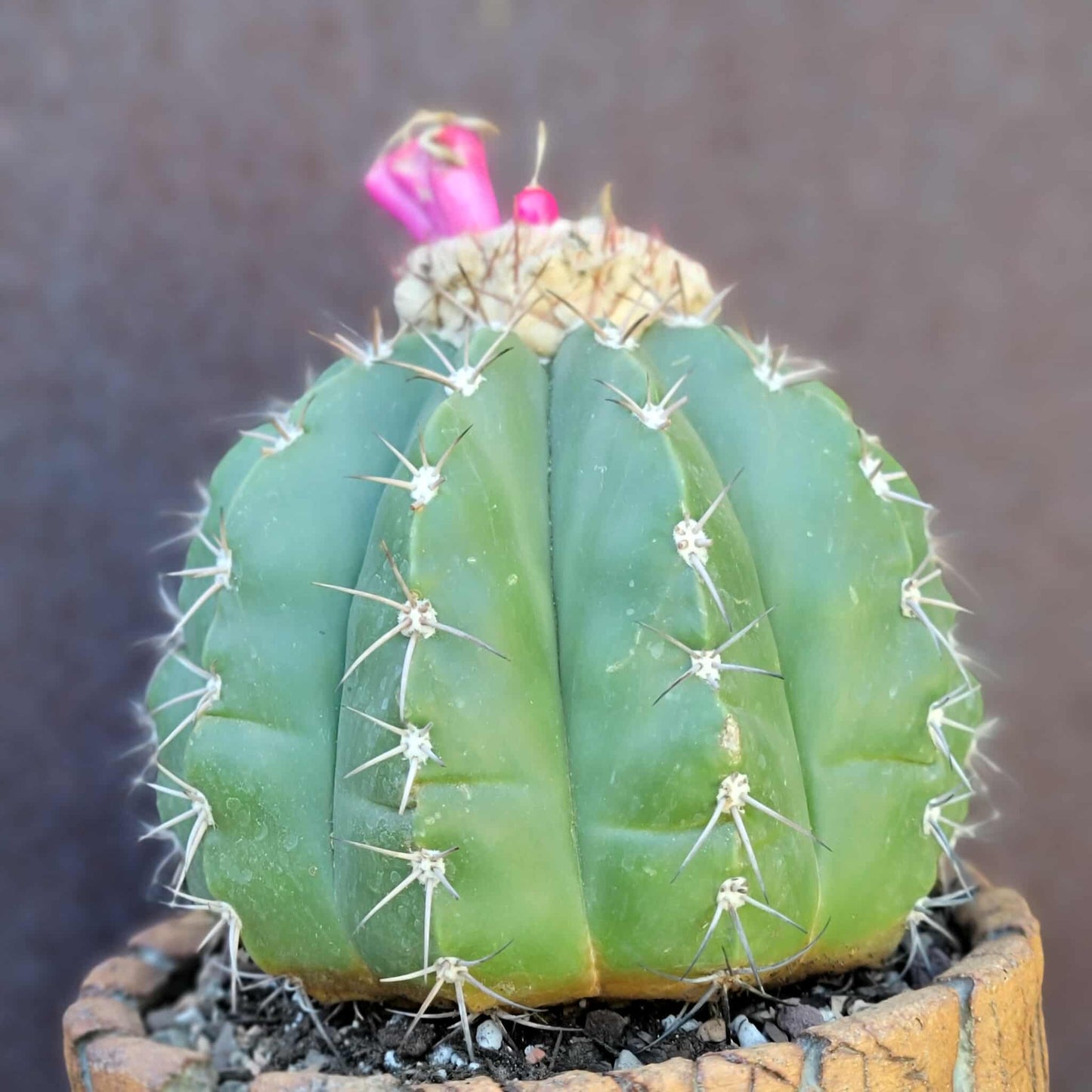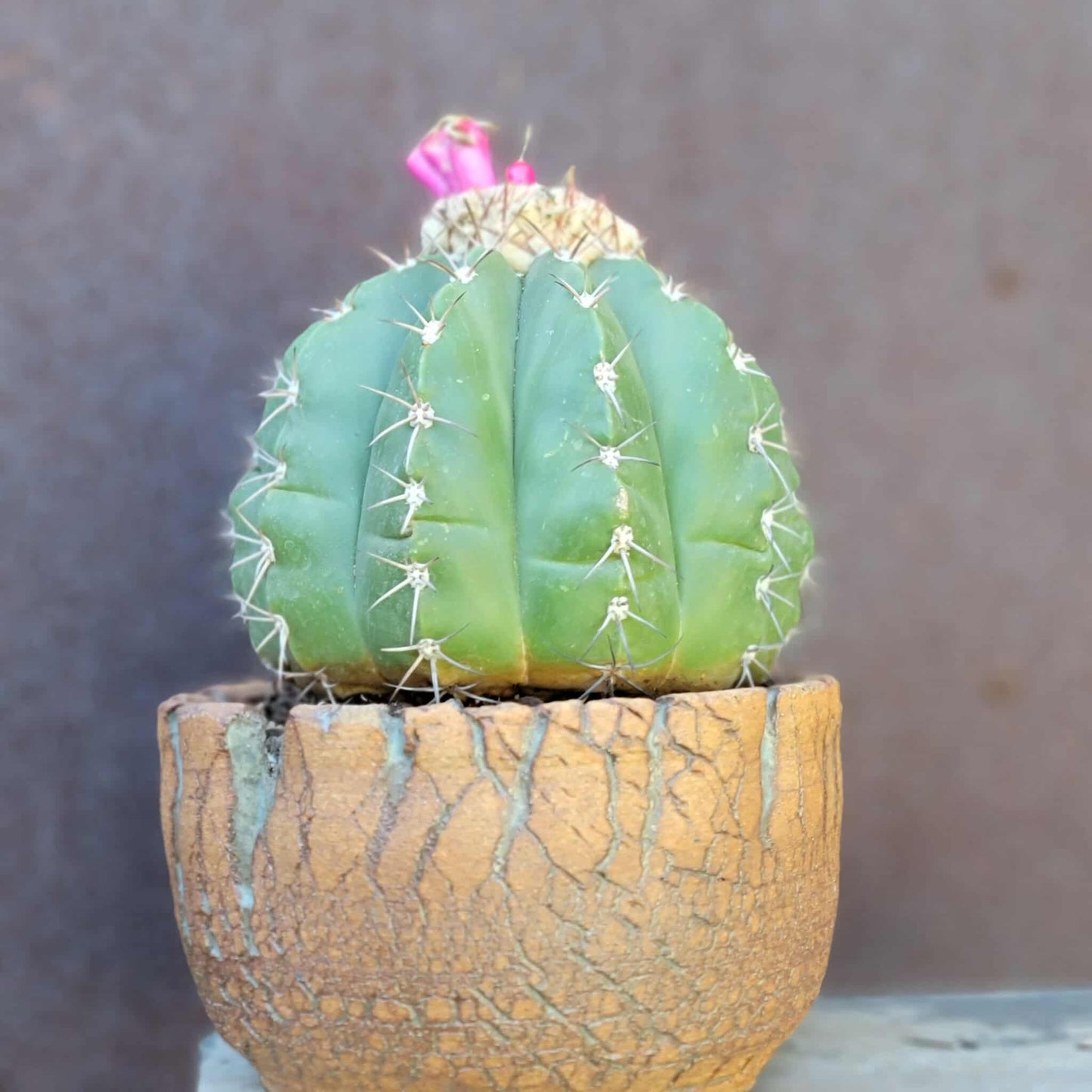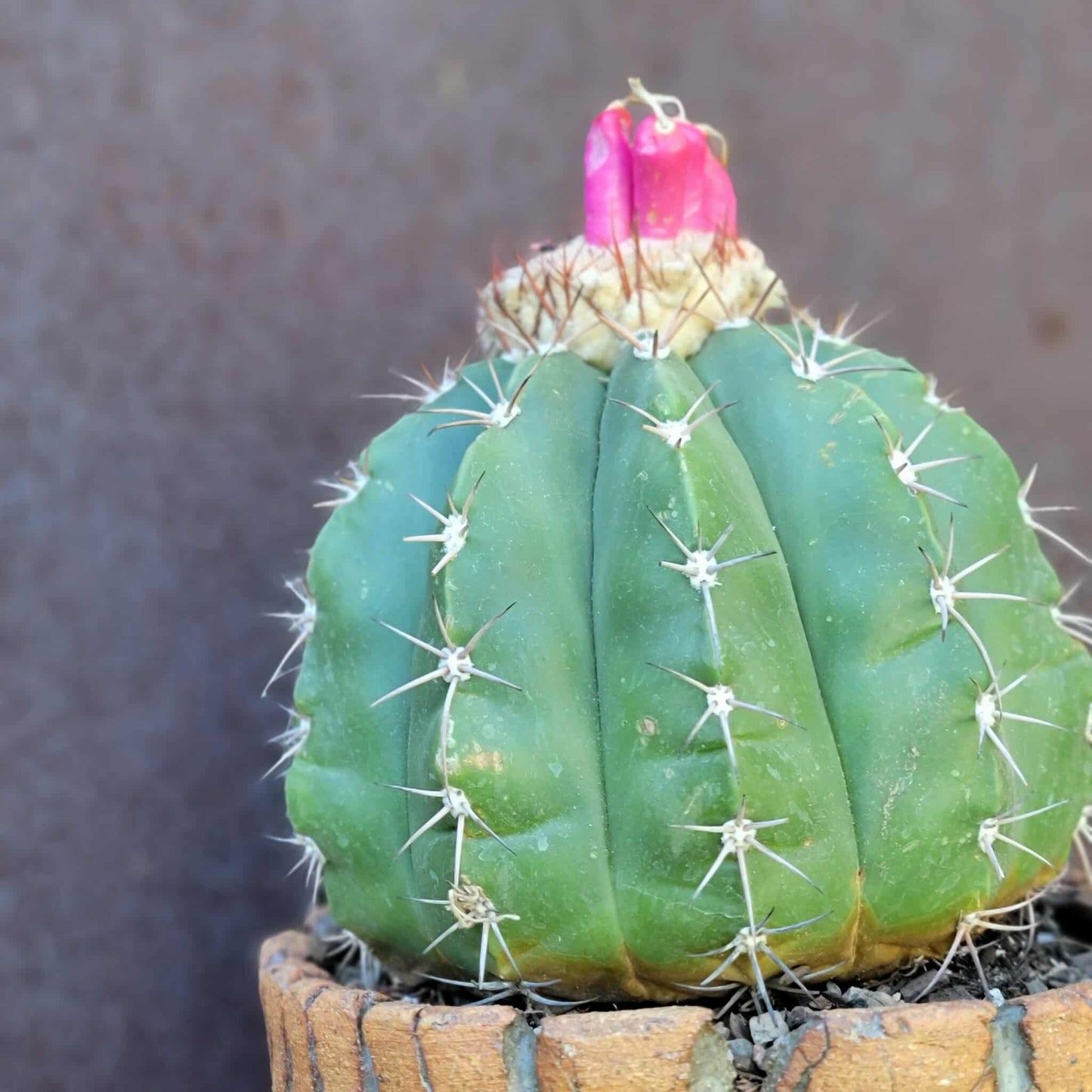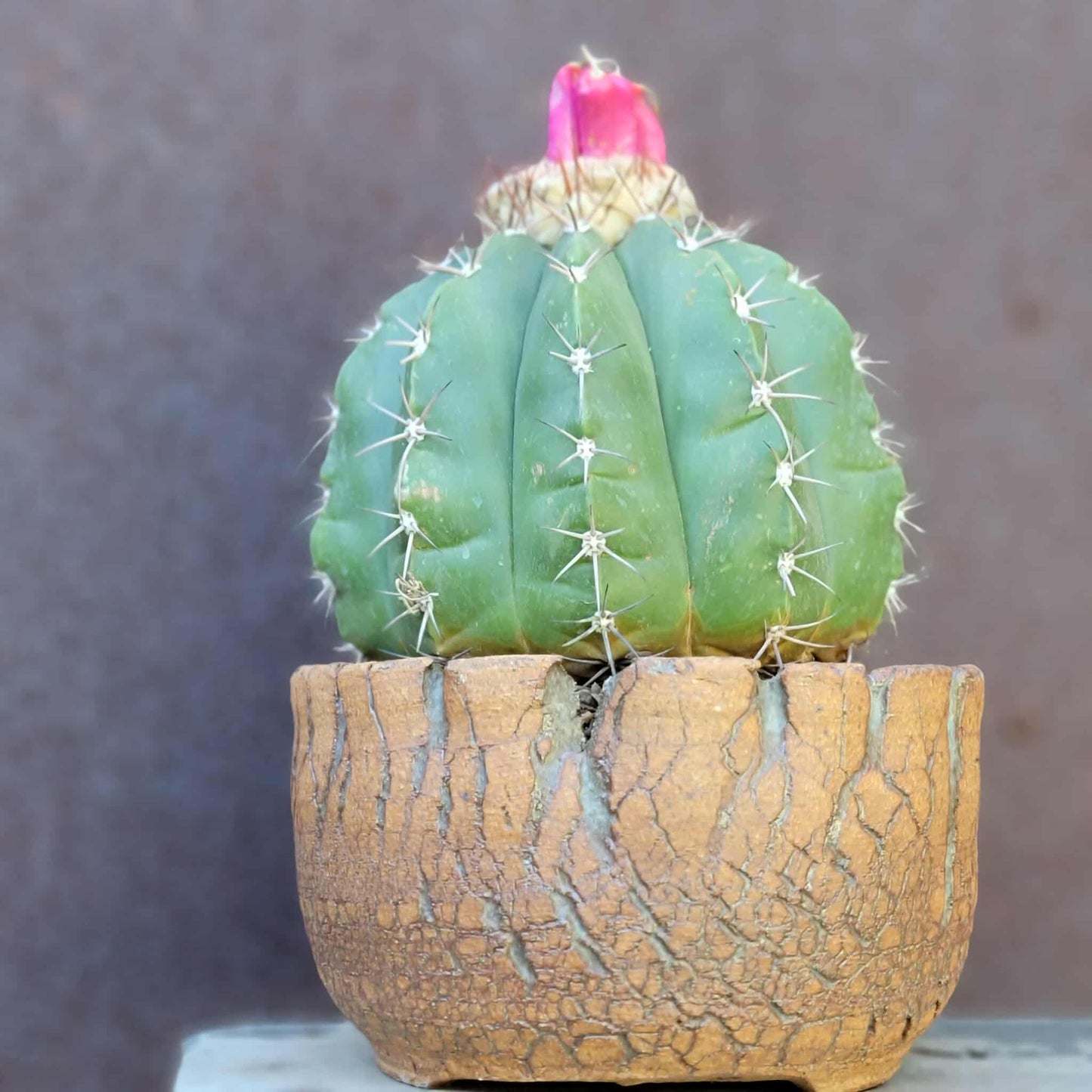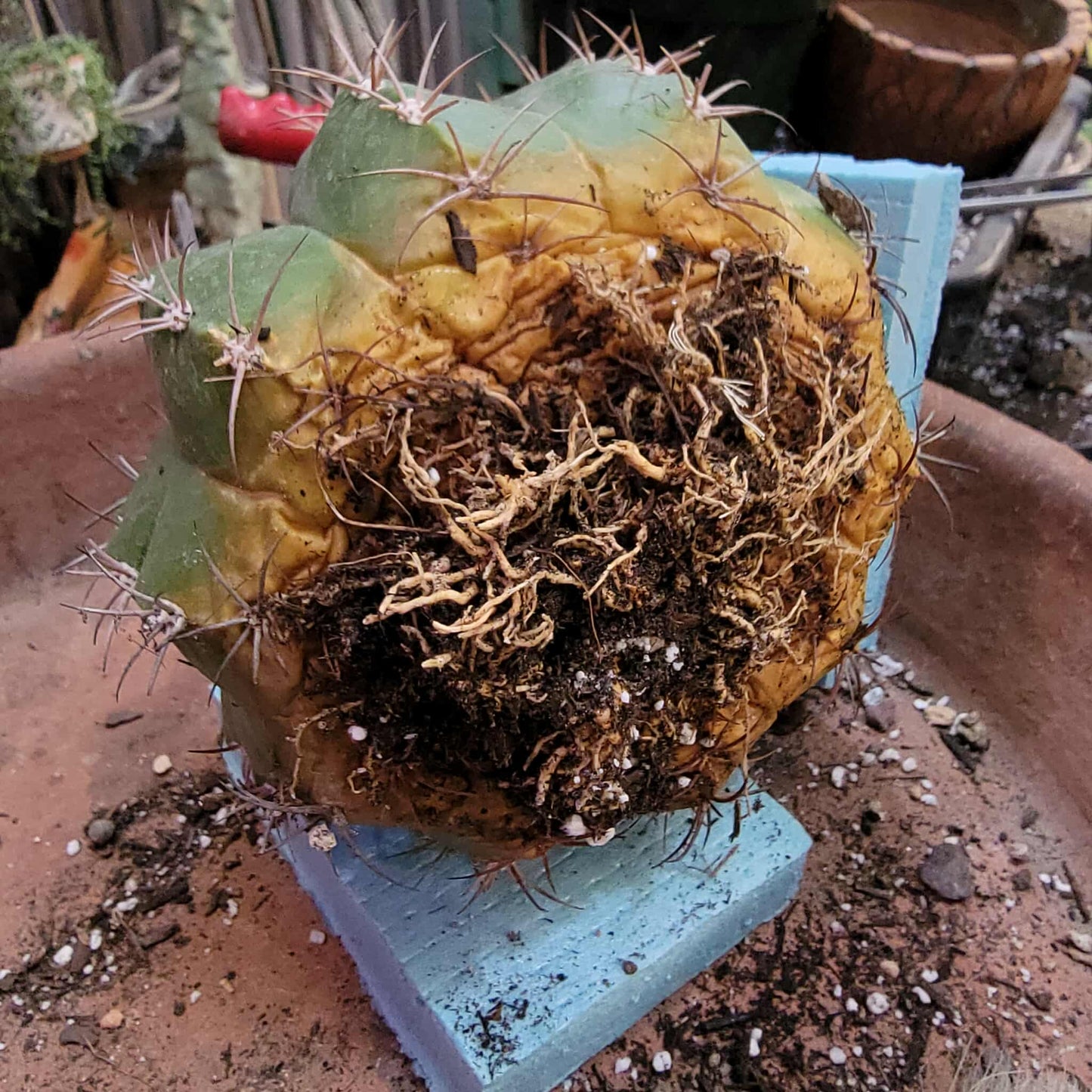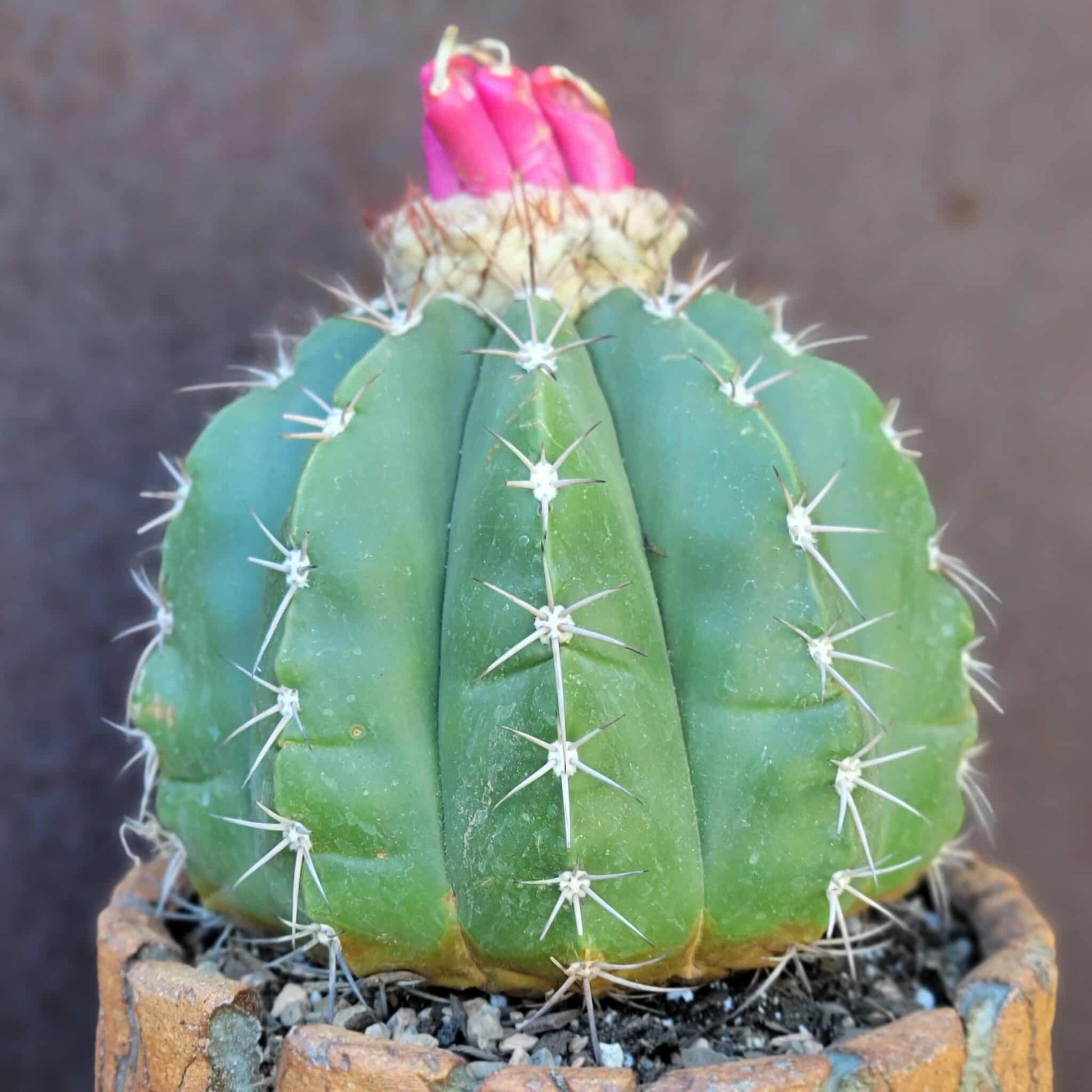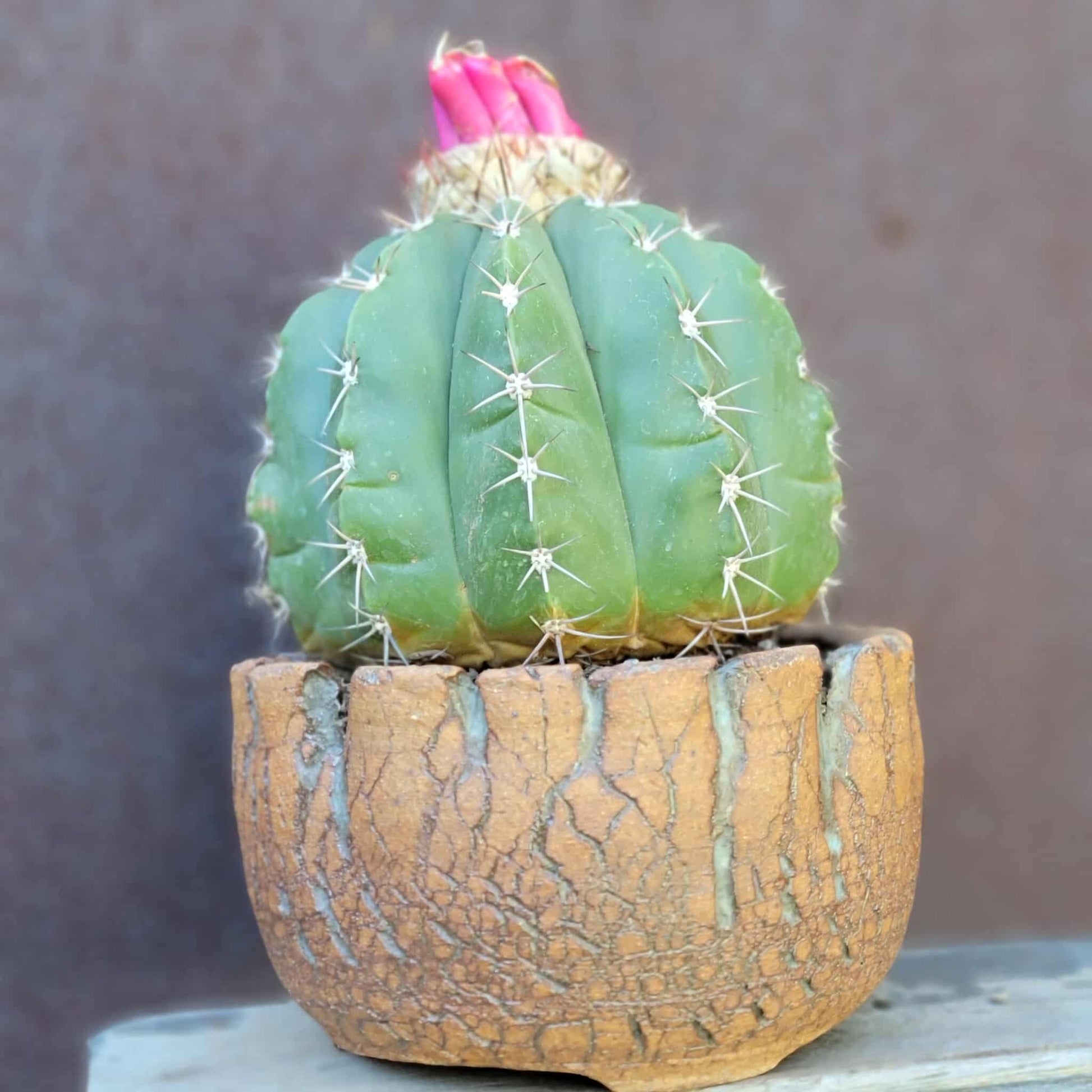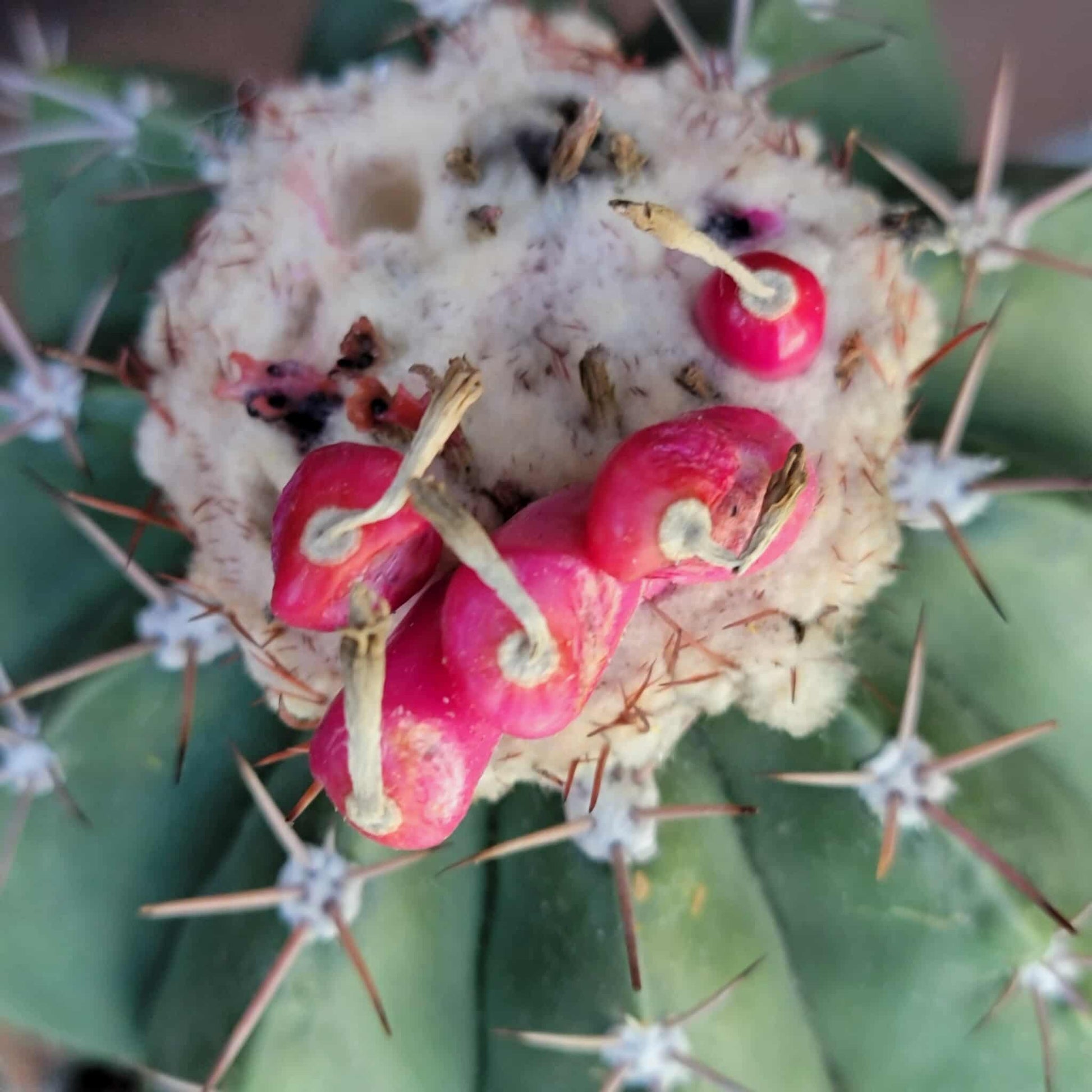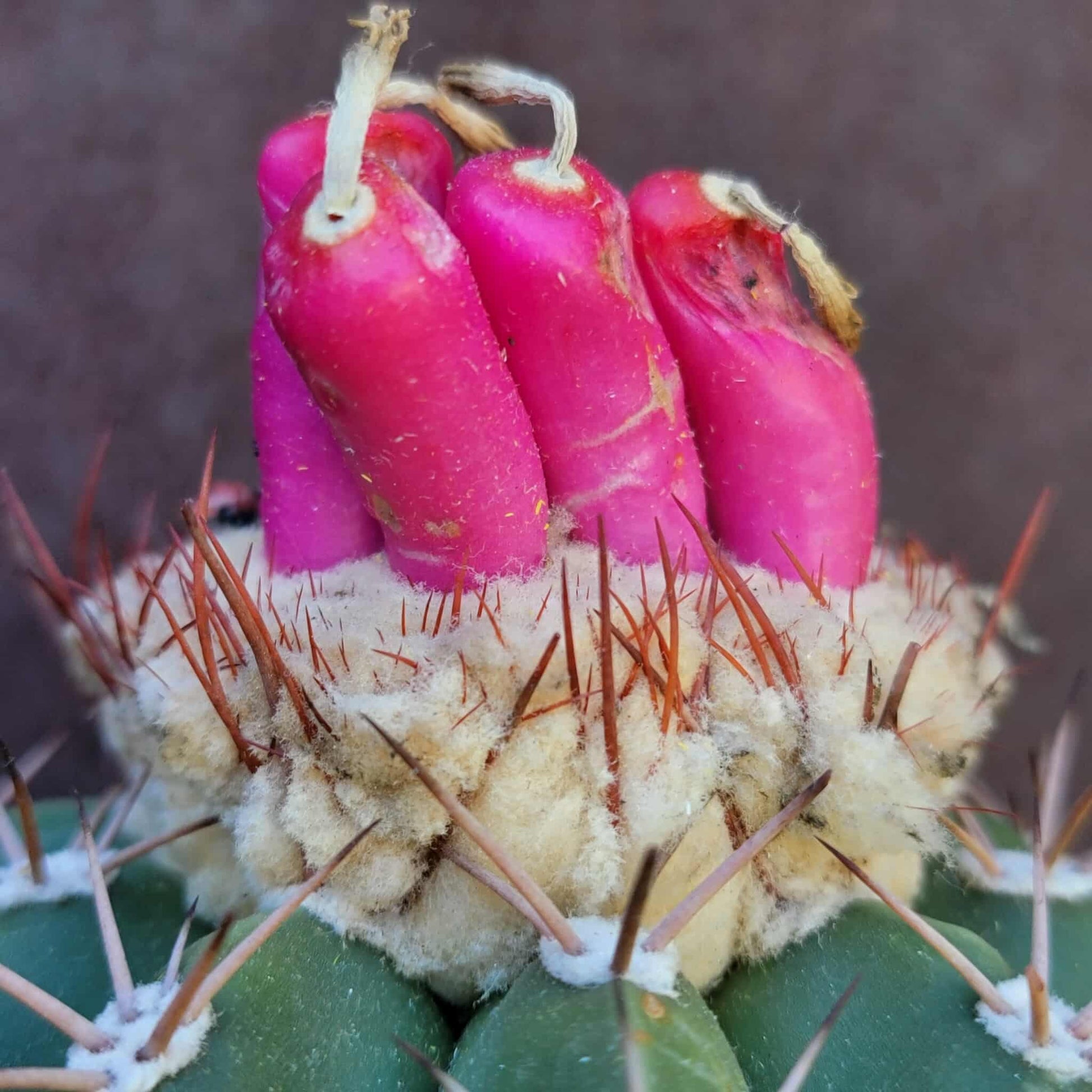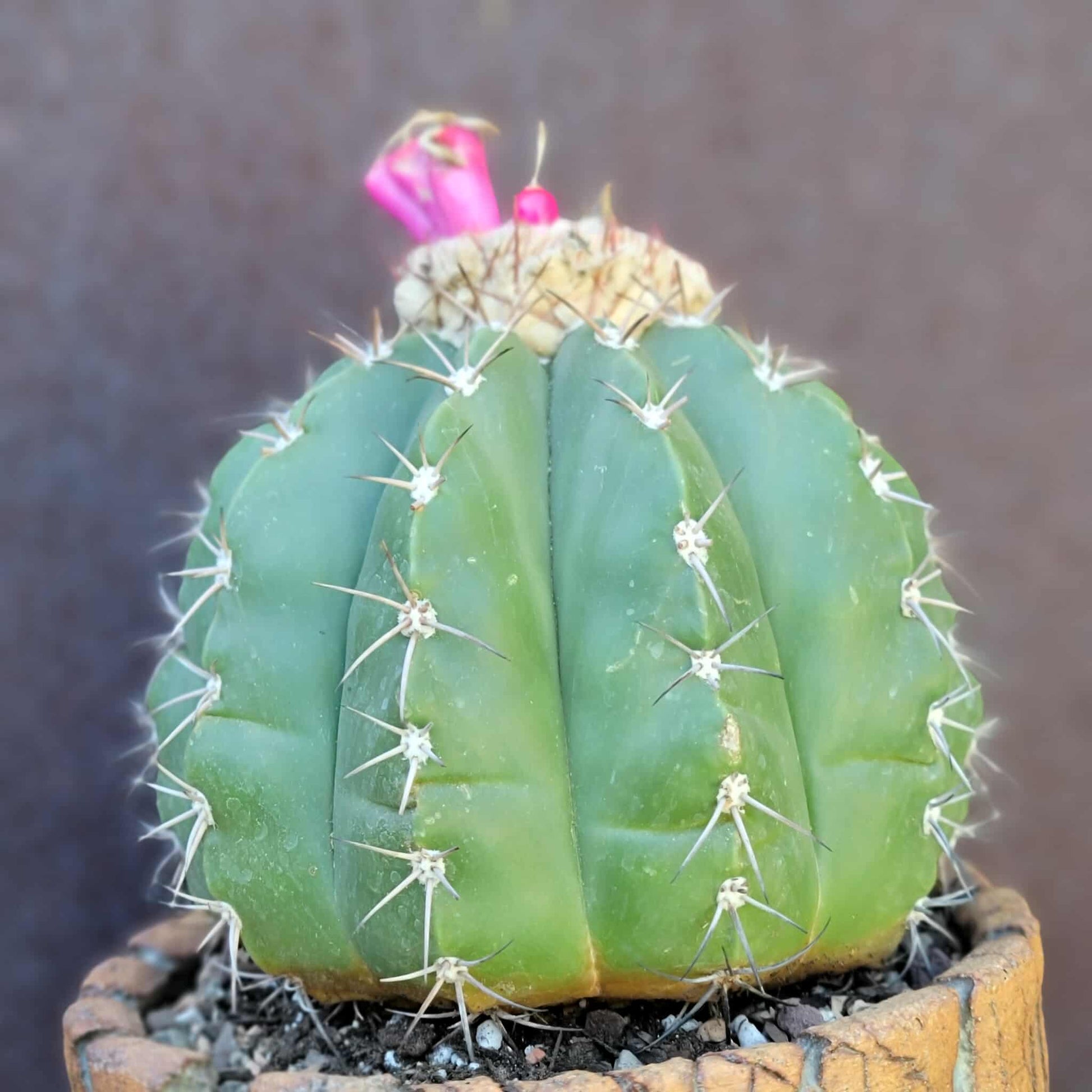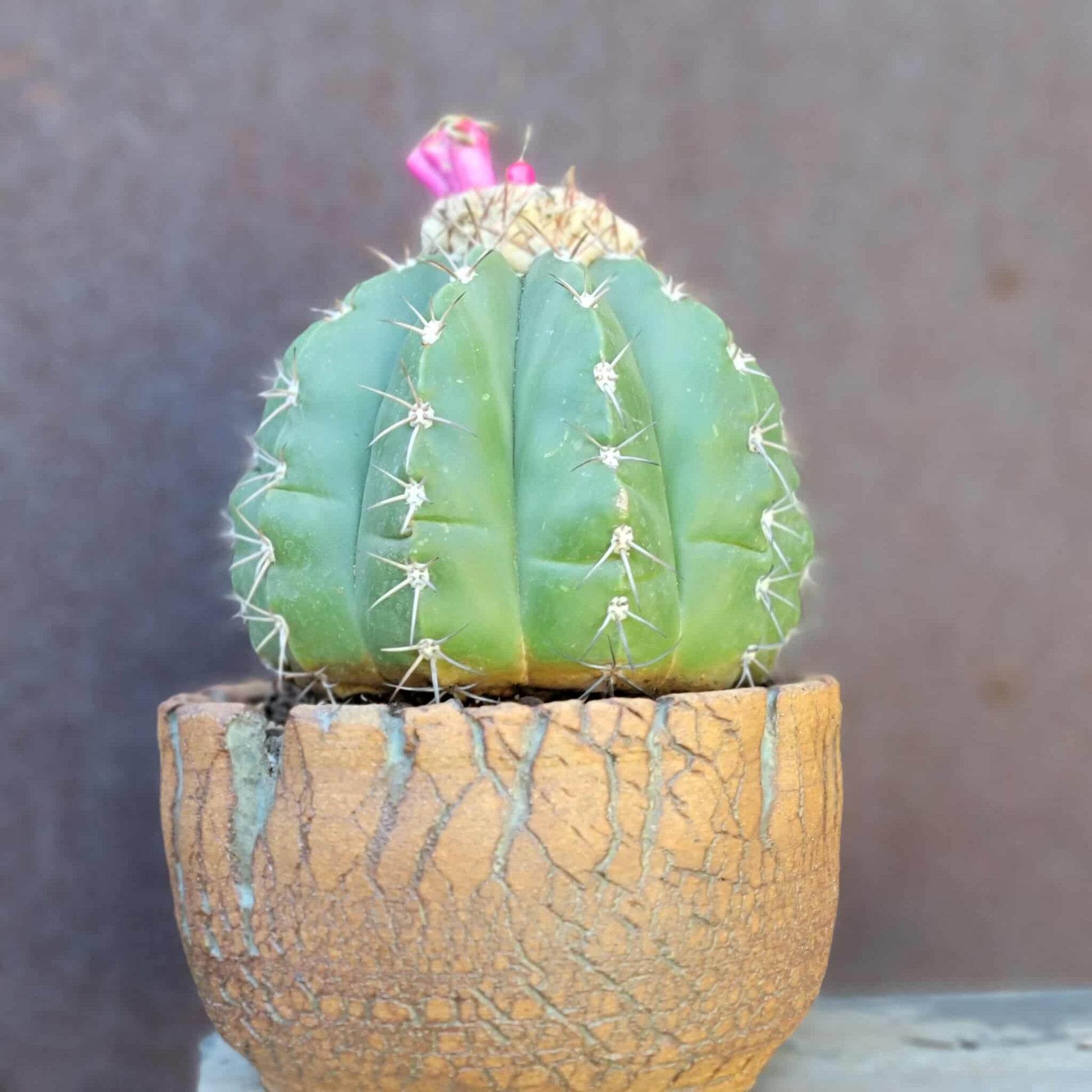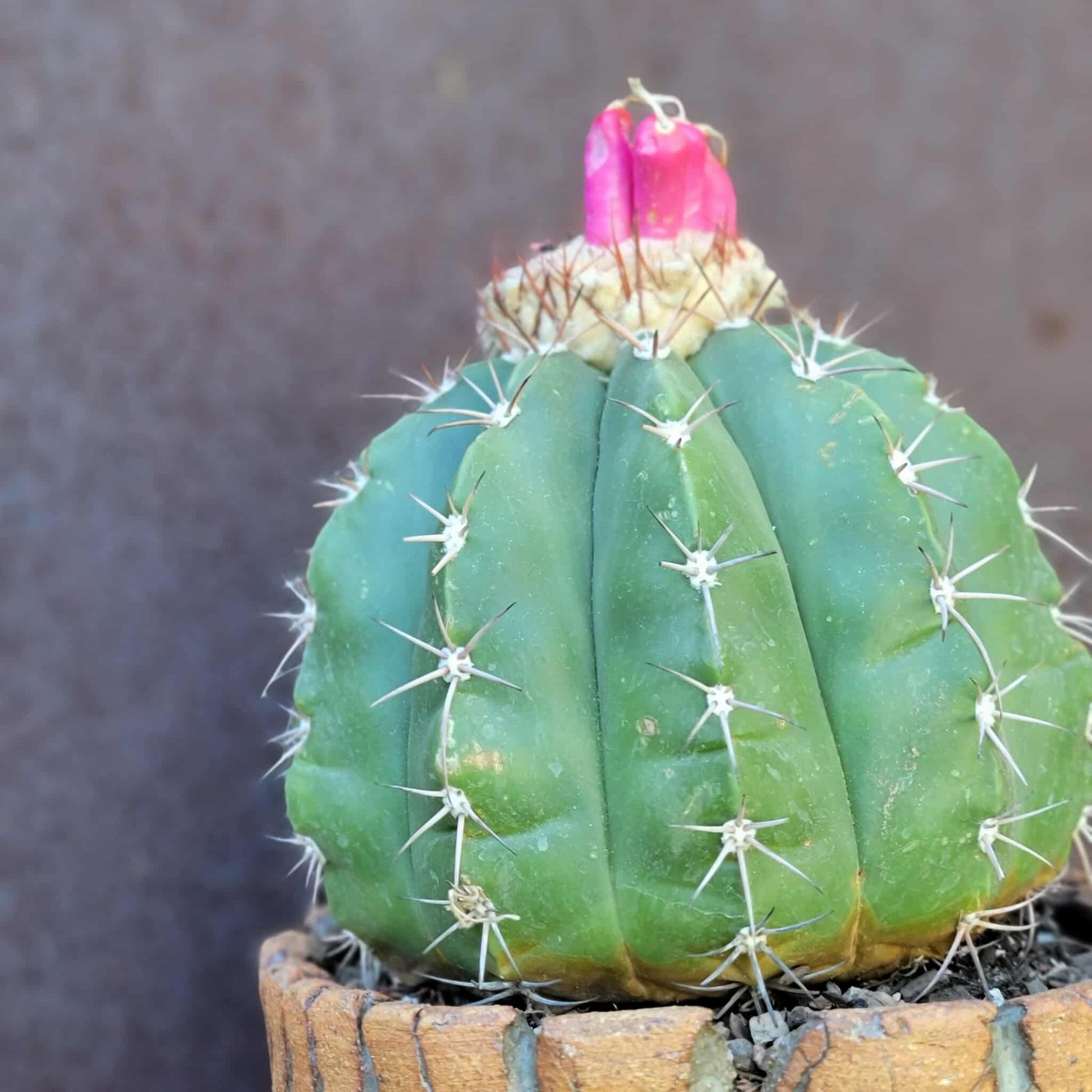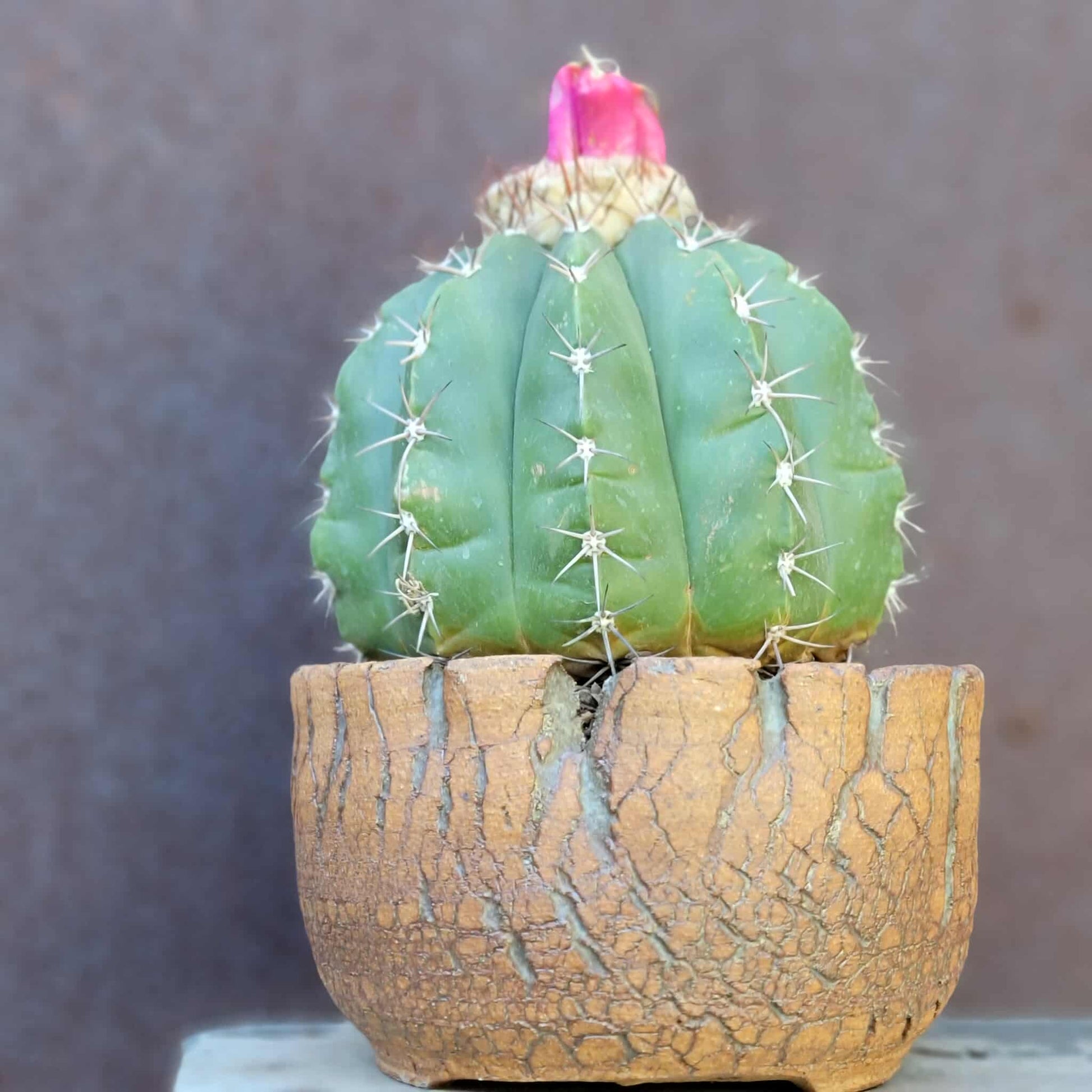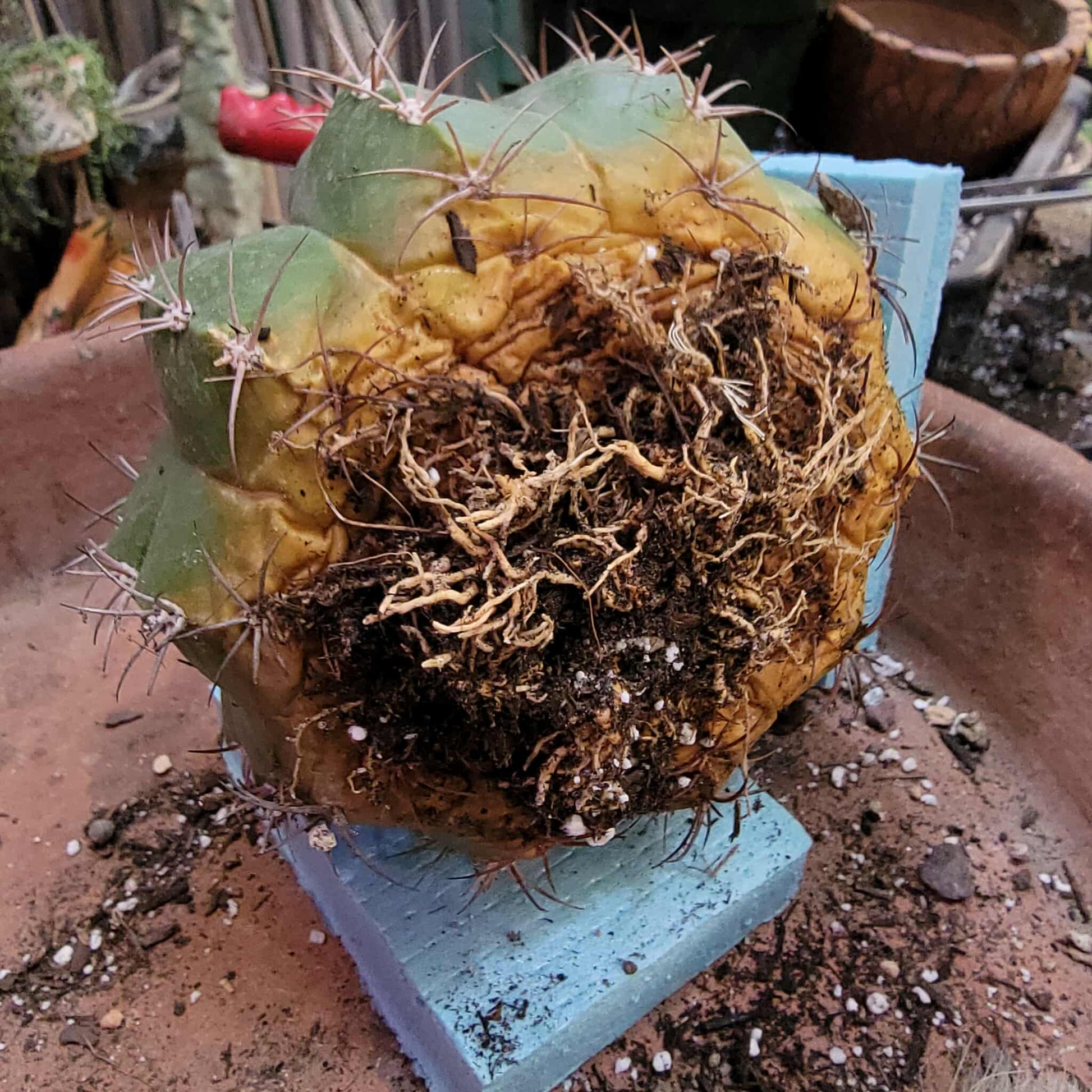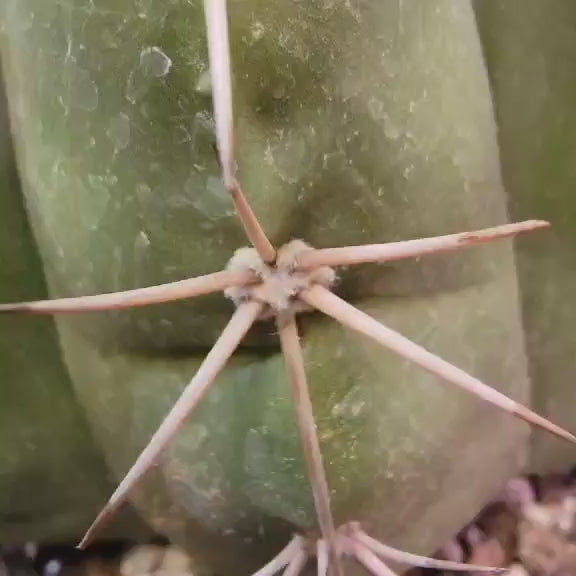Shangri-Ha Cactus Ranch
Melocactus Maxoni
Melocactus Maxoni
Couldn't load pickup availability
Melocactus Maxoni
You will receive this exact BIG specimen.
Measures 6"w x 6"h.
Roots as shown.
Showcased here in one-of-a-kind handmade pottery (sold separately).
Will be shipped bare root.
Melocactus maxonii is a distinctive species of cactus known for its signature cephalium, a woolly structure that grows at the top and produces flowers and fruits. This cactus is native to Central America and the Caribbean and is known for its preference for consistent warmth.
Key Features:
- Origin: This species is native to mountainous regions of Guatemala and Honduras, and is also found across the Caribbean, Mexico, and other parts of Central and northern South America.
- Appearance: Young plants are globular, but the body can elongate slightly with age. The green body is marked with prominent ribs lined with areoles, from which small spines grow.
- Cephalium: A key feature of mature Melocactus is the cephalium, a dense growth of woolly bristles at the apex. It is often pink, red, or white in color and is where the flowers and fruits develop.
- Flowers and fruit: Small pink or red flowers emerge from the cephalium, followed by red, oblong fruits.
Care:
Because Melocactus maxonii is a tropical cactus, its care differs from that of typical desert cacti, making it more challenging for novice growers.
Light
· It requires ample bright, direct sunlight, ideally 6 to 8 hours per day.
· If grown indoors, a southern exposure window is best. If natural light is insufficient, a grow light is recommended.
Water
· This species needs more consistent watering than many other cacti and should not be allowed to dry out completely.
· Water regularly during the growing season (spring and summer), but allow the potting mix to start drying before rewatering.
· Reduce watering significantly or stop altogether during the winter months.
· Frequent, small amounts of water are often better than infrequent, deep drenching.
Temperature
· Melocactus maxonii is sensitive to cold. It needs temperatures consistently above 70°F (21°C) and should not be exposed to temperatures below 60°F (15°C) or cold drafts.
· It thrives in warm, humid air.
Soil and pot
· Use a well-draining, porous soil mix suitable for cacti and succulents.
· Adding materials like perlite, pumice, or sand improves drainage and helps prevent root rot, to which Melocactus is susceptible.
· Use a pot with drainage holes.
Fertilizer
· During the spring and summer growing season, you can feed the plant with a balanced, diluted cactus or succulent fertilizer.
Repotting
· Young plants can be repotted annually into a slightly larger pot.
· Mature plants, especially those with a cephalium, do not tolerate repotting well and may slow their growth for a year or two afterwards.
